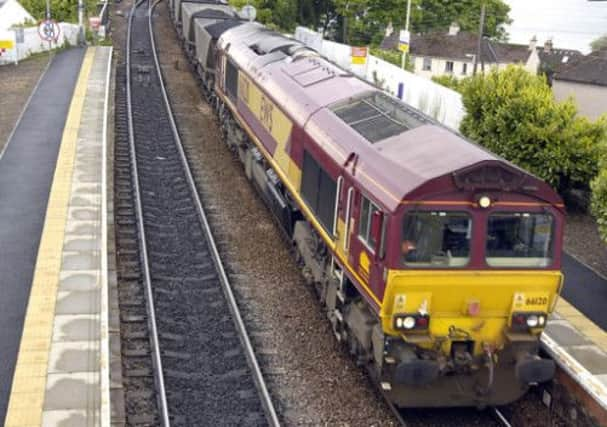Rail freight must be remembered in A9 debate


IN ALL the recent debates on reducing the toll of deaths and injuries on the A9 between Perth and Inverness, very little has been heard about the potential solutions offered by the country’s safest mode of overland freight transport – the railway.
The Perth-Inverness line was last upgraded in the late 1970s – since when the A9 has been completely rebuilt – yet now there are calls for no less than £3 billion to be spent on fully dualling the road. But before rushing into a knee-jerk road-building “solution”, the Scottish Government needs to consider how a balanced mix of rail and road enhancements could produce the best outcome in terms of cost-effectiveness, safety, economic benefits and environmental improvement.
Advertisement
Hide AdAdvertisement
Hide AdDespite two-thirds of its length being only single-track, the Perth-Inverness “Highland Main Line” already handles some significant freight flows – cement, oil, offshore oil pipes, and the daily Tesco train from Central Scotland to Inverness which takes no less than 20 lorries off the A9. There is scope for rail to carry far more supermarket traffic, as well as Highland exports – but there is little capacity left on the line for additional freight and for the long-mooted hourly passenger train frequency.
Given substantial investment in rail, what additional freight flows could shift from road to rail, and thereby reduce capital and maintenance funding requirements for the A9? This month an EU-supported trial train operation begins conveying Speyside and Highland whisky in bulk from Elgin to Central Scotland maturation and bottling plants. One of the key reasons that rail has strong potential from the Elgin/Inverness axis is that there are very long hauls to most markets – and, except where large manufacturers or processors have their own sidings, rail generally does need long distances to compete with road haulage. Other whisky-related rail potential includes barley, malt and empty (imported) casks, while foodstuffs produced in the Highlands and Moray could also lend themselves to movement by train – to domestic, European and Deep Sea markets.
Deep Sea exports in general from the North of Scotland could also switch to a regular rail service from Elgin/Inverness, getting the traffic on rail much farther north than the current rail starting point at Coatbridge Freightliner Terminal, which has long provided regular train services to the “big five” ports at Felixstowe, Liverpool, Southampton, Thamesport and Tilbury. Additional retail flows – over and above the Tesco train – are an obvious target for modal switch, as are timber/biomass from forest to mill/power station. And the Highlands could emulate Edinburgh’s long track record of shifting domestic waste by rail. Scores of trucks could be taken off the A9 daily – reducing the toll of fatal accidents in which HGVs are disproportionately involved, and cutting the serious damage done to road surfaces by 44-tonne vehicles. Unfortunately the proposed A9 full dualling – a political decision for which there is a flimsy “business case”, due to the low levels of traffic on the rural sections of the route for most of the year – poses a major threat to existing and potential rail freight flows. The Scottish Government has failed to treat appraisal of road and rail route enhancement – and the associated public investment – on a “level playing field”.
Interestingly, the Scottish Government’s 2009 Strategic Transport Projects Review (STPR) which was supposed to determine future investment priorities, concluded that the A9 upgrade would have a “major negative impact” on the environment, while rail freight enhancements would “significantly contribute to the objective ‘to address issues of driver frustration’ by encouraging a transfer of freight from road to rail thereby reducing the number of goods vehicles on the A9. The improvements would make a significant impact on rail journey time for freight movement, which would make this mode of travel more attractive to hauliers. The subsequent reduction in the number of goods vehicles on the A9 would remove a portion of slow-moving vehicles from the road leading to less driver frustration.”
Regrettably – and inexplicably – STPR did not address the A9 and Highland Main Line upgrades jointly in an integrated cross-modal analysis, evaluating a range of road/rail package options to meet declared policy objectives for the economy, environment and road safety.
The as-yet unspecified upgrades to the railway currently planned by the Scottish Government are budgeted to cost a maximum of just £600 million, yet for around £1bn – just a third of the cost of full A9 dualling – the Highland Main Line could be fully doubled and electrified, utterly transforming the railway’s capacity and capability for both freight and passenger traffic. So why is the Scottish Government ignoring this massive opportunity?
• David Spaven is Scottish representative of the Rail Freight Group